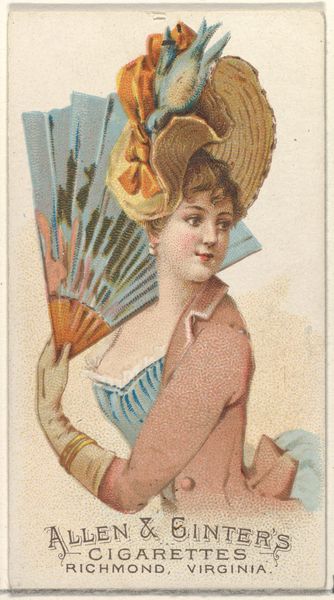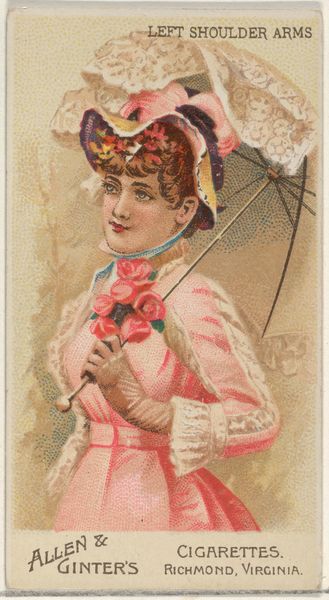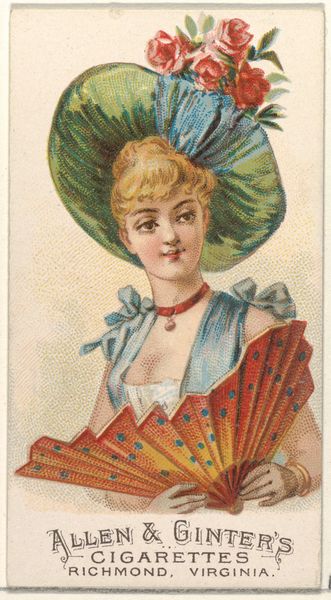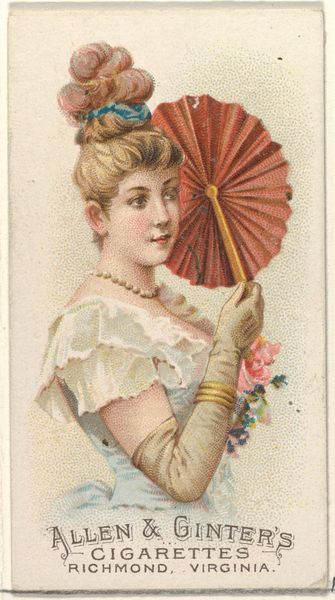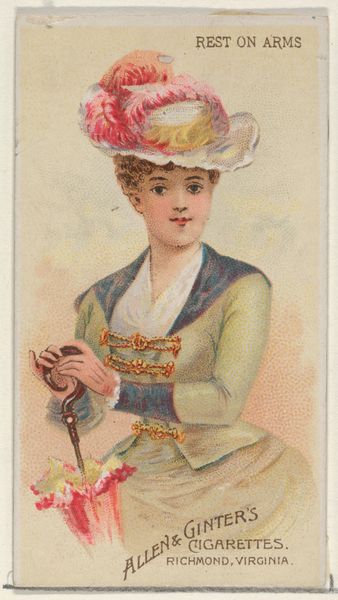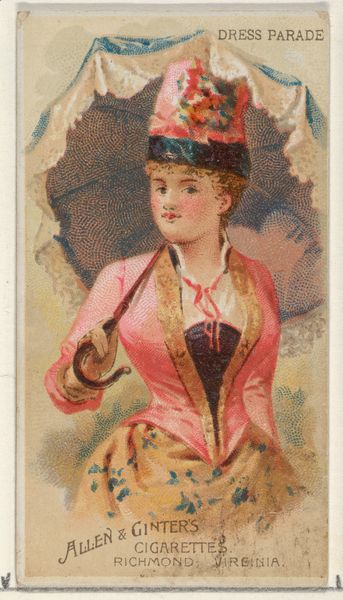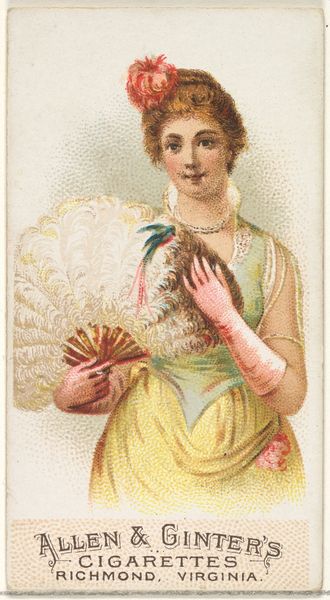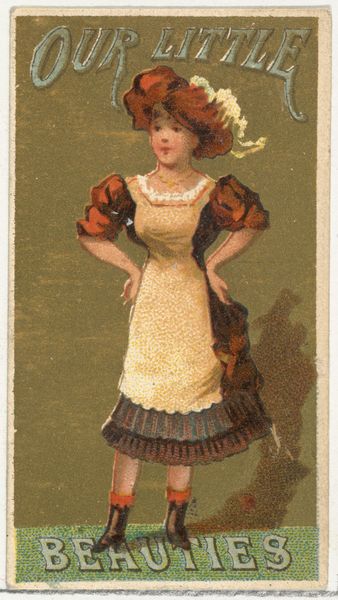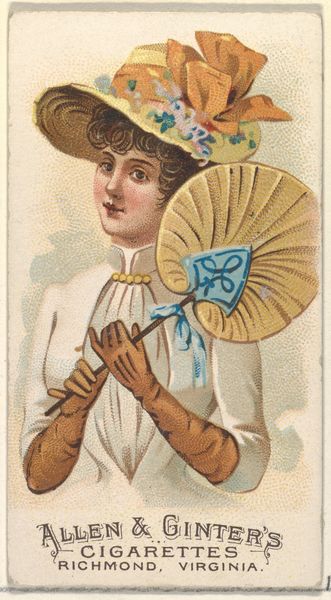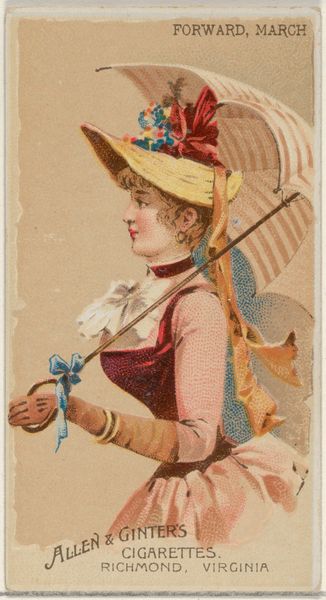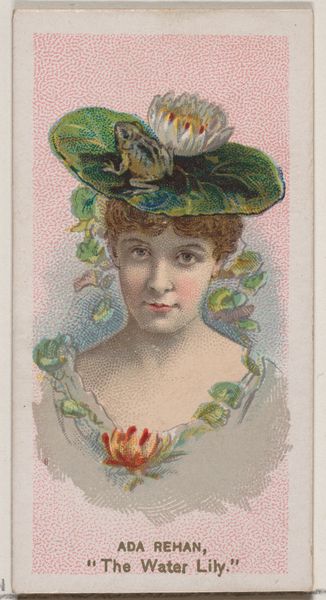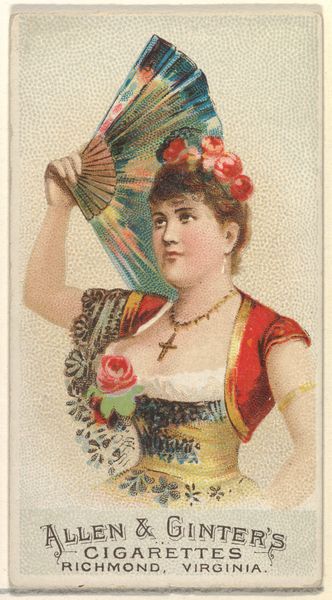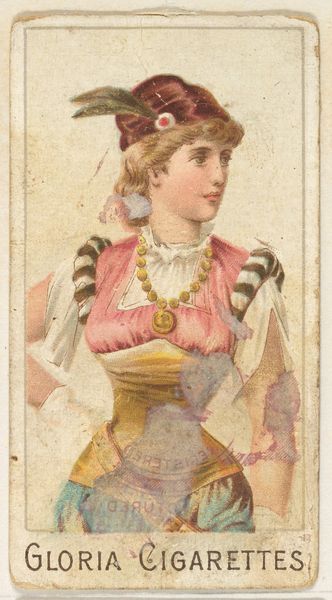
Right Shoulder Arms, from the Parasol Drills series (N18) for Allen & Ginter Cigarettes Brands 1888
0:00
0:00
drawing, print
#
portrait
#
drawing
# print
#
figuration
Dimensions: Sheet: 2 3/4 x 1 1/2 in. (7 x 3.8 cm)
Copyright: Public Domain
Curator: This print from 1888, entitled "Right Shoulder Arms, from the Parasol Drills series" and created by Allen & Ginter for cigarette cards, offers a curious glimpse into popular culture of the late 19th century. It’s part of the collection right here at the Metropolitan Museum of Art. Editor: Immediately, I’m struck by the dreamy, almost idealized femininity on display. There's an emphasis on poise, grace, and a particular vision of beauty. The coloring is soft, like looking through a faded photograph. Curator: The symbolism is subtle, but present. Allen & Ginter created entire series dedicated to different activities and even types of women, often exoticizing them, I would add. In this case, a military style is presented within beauty standards. Editor: Exactly! What’s so fascinating is the merging of military precision with such delicate adornments - the ribbon, lace, and those gorgeous roses spilling out from her hat. It feels deliberately contradictory. Is this a statement about feminine strength? Curator: I read the choice of "parasol drills" as an aspirational one. To be an active participant in public life was becoming more of an accepted expectation. Think of the era: just after the reconstruction in the USA and prior to the advent of full voting rights for women. Editor: Absolutely, and in that context, the parasol becomes an emblem of both protection and… well, not aggression, exactly, but definitely *agency*. The parasol shields her from the sun but it also suggests movement, performance, a drill. What narrative would emerge, do you think, if each card in the series had been viewed side-by-side? Curator: Viewing the whole collection may feel a bit overwhelming at first but ultimately they offer little slices of time in relation to the concept of societal identity and aspiration. There’s an element of the gaze, of course—male artists representing women for a primarily male audience—but the image manages to carry those dual aspects: commercial desire and empowerment. Editor: That contrast makes the artwork enduring. The delicacy and power… I think it has stayed with me now, so thanks!
Comments
No comments
Be the first to comment and join the conversation on the ultimate creative platform.
